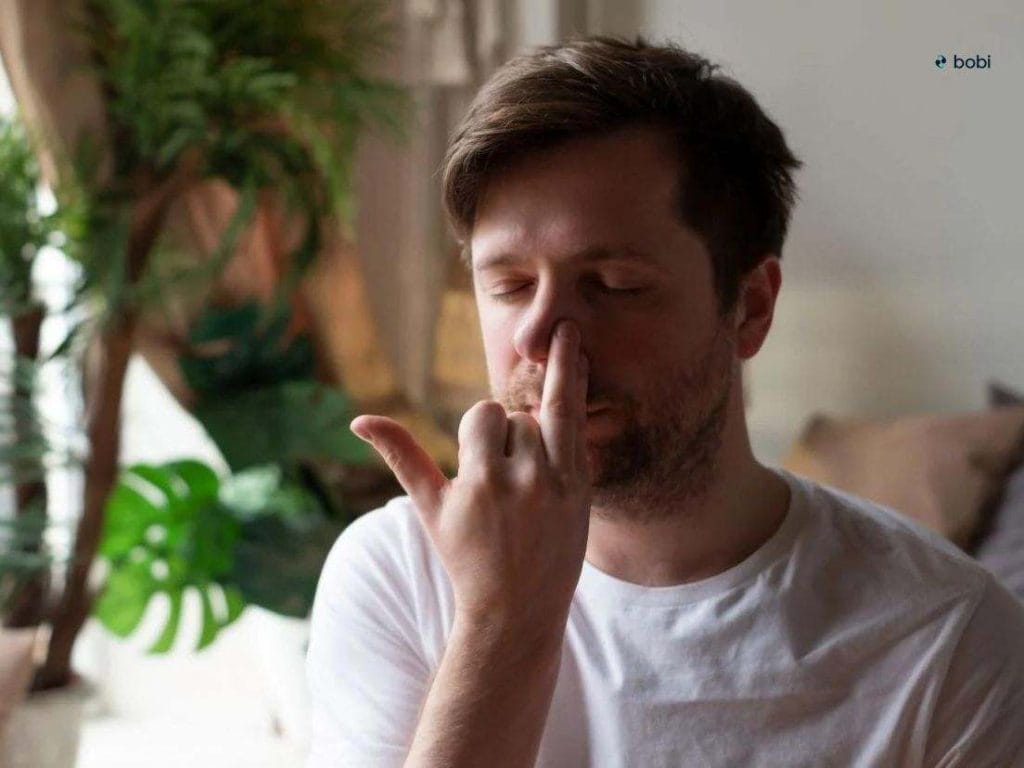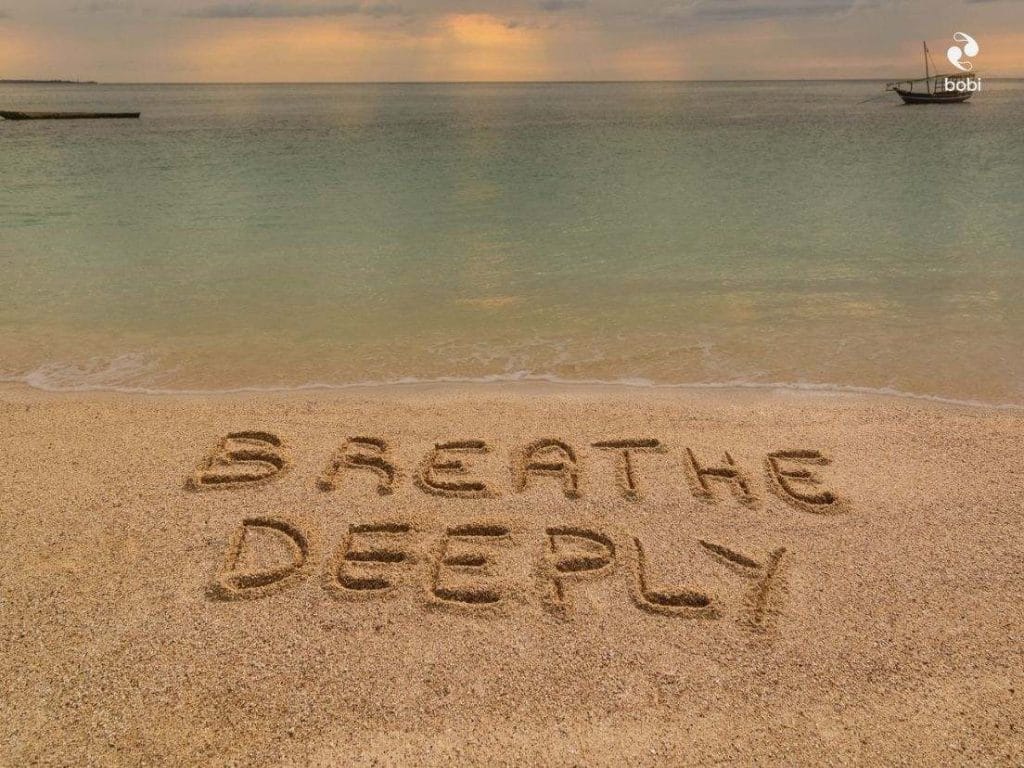
Did you know you can reset your breathing rhythms through simple exercises? The scientific term for this resetting process is ‘entrained respiration.’ Entrained respiration refers to the synchronization of breathing patterns with external rhythms or activities. As a psychologist, I call it the “Take Anywhere” breath coach technique, which acts as an at-hand personal breathing coach. This can involve aligning one’s breath with physical movements, auditory cues, or other rhythmic stimuli. The concept relies on the body’s natural ability to adapt and synchronize its internal processes, such as the respiratory cycle, with consistent external patterns. Having its roots in neuroscience and physical therapy, this approach can prove your secret weapon for improved well-being.
During my research on entrained respiration, I discovered that this phenomenon works on the basis of specific mechanisms.
This practice implicitly resets our breathing rhythms, fostering a firm relationship between breathing rate and rhythmic stimuli.
The operation of entrained respiration relies on three key mechanisms: neural synchronization, proprioceptive feedback, and sensory integration. I’ve found that all of these mechanisms are critical for better respiratory functioning and for developing the habit of better breathing.
For a better understanding of the mechanism, let me give you a real-life example. Imagine that our brain is not just a brain but a regulated orchestra, in which each neuron is like strings playing in unity. Entrained respiration is the maestro coordinating these neural movements to control our breathing rhythms. The brain’s respiratory centers can synchronize breathing with rhythmic external stimuli, such as sounds or movements. When we engage in conscious rhythmic hand exercises, for example, we affect the brain areas that are in charge of the autonomic control of breathing. This synchronization helps stabilize breathing patterns, leading to more consistent and controlled respiration. It is now recognized that by synchronizing the neural circuits involved in breath control, entrained respiration promotes a state of calm and coherence that benefits both the mind and body.
The second important mechanism I came across is proprioceptive feedback. Proprioceptive feedback is our body’s capacity to trace its motion, position, and balance.
By incorporating rhythmic hand exercises into our daily routines, we improve our sensory feedback, ensuring our bodies become more accustomed to their internal state. Such awareness paves our way toward more mindful and controlled breathing rhythms.
Sensory feedback from muscles and joints during rhythmic activities provides the brain with information to adjust breathing patterns, ensuring that respiration matches the rhythm of the movement. This feedback has notable merits, like enhanced oxygen exchange and better respiratory well-being.
Entrained respiration exploits our sensory integration, too. Sensory integration is our brain’s power to proceed and sort out sensory input. By ensuring our hand exercises harmonize with our breathing, we improve this procedure, unlocking the doors to enhanced body awareness and alleviating physiological stress. The integration of sensory inputs (auditory, visual, tactile) with respiratory control mechanisms enables the synchronization of breathing with external rhythms. This integration can help regulate breathing, especially in stressful or anxious states.
As a psychologist in this domain for the past twenty years, I have witnessed the power of having a physical prompt to guide a slow breathing rate.

In my journey of different exercises to coach slow, controlled breathing, rhythmic hand exercises initially surprised me with the results I observed. Rhythmic hand exercises can be viewed as a bridge that fills the gaps between our body’s actions and its breathing rhythms. Consequently, the action of rhythmic movement promotes a profound link with our respiratory system.
Rhythmic hand exercises involve coordinated hand movements that can serve as a visual and tactile cue to regulate breathing. Such easy-to-use, yet powerful, exercises can boost our potential to govern our breath.
The foundational pillars of the phenomenon of entrained respiration are rhythmic hand exercises. These exercises have a plethora of health advantages that transcend the boundary of mere respiratory enhancement. Let’s explore how their benefits leaves influence our both mental and physical well-being:
For those who suffer from respiratory issues like asthma and chronic obtrusive pulmonary disease (COPD), rhythmic hand exercises that entrain slow, controlled breathing provide notable relief. When we incorporate these activities into our daily routine, they guide us in maintaining a stable breathing rhythm. Consequently, this paves the way to a more regular breathing pattern that increases lung functioning and facilitates a healthy breathing habit. Rhythmic hand movements provide a physical cue that helps regulate the pace of breathing. This can be especially useful for individuals who struggle with maintaining a consistent breathing pattern.
Coordinating hand movements with breath focuses the mind and reduces mental distractions by lowering the body’s stress response. Rhythmic hand exercises help us avert our attention from our daily stressors and foster a physiological decline in stress by reducing the cortisol levels in our bodies.
This mindful practice can lower stress and anxiety levels, promoting a state of calm and relaxation.
The dual focus on movement and breathing not only diverts the mind from stressors but also physiologically decreases stress, evidenced by lowered cortisol levels.
The entrained respiration method works on the principle that regulates and intensifies each breath, boosting the efficacy of our respiratory system. By practicing slow, controlled breathing with rhythmic hand exercises, individuals can improve their respiratory efficiency.
Focusing on the synchronization of hand movements and breathing enhances mindfulness. This focused kind of rhythmic hand exercise offers a positive impact on our mental health. The important part of this exercise is the synchronization of movement and breath. The regular integration of this technique helps individuals stay present, reducing rumination and negative thought patterns often associated with stress and anxiety.

Here are the practical tips that I’ve always suggested to my clients for better results of rhythmic hand exercises.
Ensure you are seated or lying down in a comfortable position. This will help you focus better on hand movements and breathing without physical discomfort.
Begin with simple hand movements before progressing to more complex patterns. This helps build a foundation and makes it easier to synchronize with your breath.
Regular practice is key to reaping the benefits of rhythmic hand exercises. Incorporate these exercises into your daily routine to develop better control over your breathing.
Visual aids, like watching your hands move, or auditory aids, like a metronome, can help maintain a consistent rhythm. These tools can enhance the effectiveness of the exercises.
Entrained respiration transcends the mere boundaries of a simple technique; it’s your key to unlocking the doors to improved health and remaining ‘present’ in our connected world. Entrained respiration involves synchronizing breathing with external rhythms or activities, and rhythmic hand exercises are an effective method to achieve this. By coordinating hand movements with breath, individuals can regulate their breathing patterns, reduce stress, and improve overall respiratory health.
Stay updated on what's happening at bobi, and all things breathing, anxiety and mental wellness.